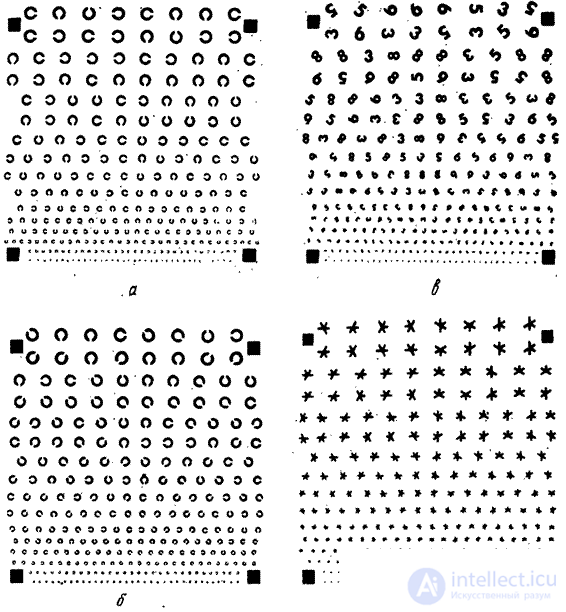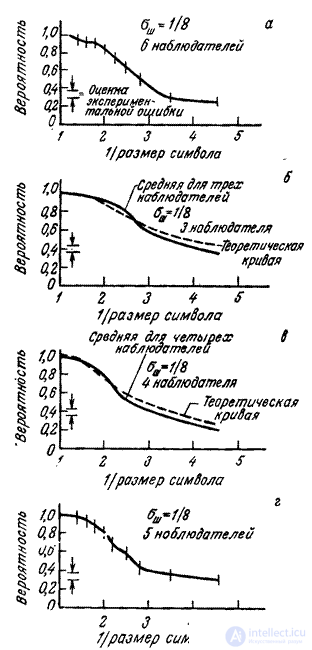Lecture
Determining the quantitative measure of deciphering the image, that is, the degree of its suitability for analysis by an observer, is much more difficult than measuring the fidelity of image reproduction. Factors affecting decipherment are deeply associated with the properties of human vision. The ability of a human observer to extract information from images depends, obviously, on the physical properties of the visual system, which are determined, in particular, by the optical properties of the eye, the non-linear response of the photoreceptors to brightness and the presence of lateral inhibition. However, the algorithms for processing data from the eye to the brain play an important and, apparently, decisive role in the process of a person extracting visual information from an image. Since the mechanisms of visual perception are still poorly studied, at present attempts to create a criterion for deciphering images based on a model of the human visual system seem hopeless. Rather, it is necessary to dwell on some particular criteria that would be in good agreement with the results of subjective assessments.
Most of the experiments on expert evaluation of image deciphering use simple stroke patterns, such as optometry tables, composed of randomly selected letters of different sizes. In fig. 7.8.1 presents four control tables used in object recognition experiments [51]. Lan-Dolta tables [52, 53] are made up of rows of the letter C, which can be in any of four (or eight) possible positions, and the sizes of the letters from line to line are reduced. The digital table is made up of "curvilinear" numbers 3, 5, 6, 8 and 9, oriented randomly. In the table of stars in each symbol is missing one of the six rays. The observer must recognize the characters in all tables; Experimental results are expressed as the dependence of the probability of a correct answer on the size of the symbol. Similar experiments on discretized versions of the four tables shown in Fig. 7.8.1, conducted by Bernard [51]. The results are shown in Fig. 7.8.2. In these experiments, images on slides were sampled, then Gaussian noise was added to the readings and the results were recorded on a film in the form of a slide. As expected, with a decrease in the size of characters, the probability of recognition monotonously decreases. Bernard also noted that there was more variation in experiments with numbers than in experiments with asterisks or with Landolt tables. In addition, it turned out that the probability of correctly distinguishing numbers depends on their orientation.
So, when recognizing the rotated digit “3”, mistakes were made more often than when recognizing the same digit standing in the normal position. It can be assumed that in experiments with asterisks and Landold tables such a dependence was not observed because these symbols do not have a “standard” orientation. Bernard [51] used the theory of matched filtering to predict the results of an experiment in human discrimination of characters in Landolt tables. Probability of correct recognition  orthogonal signals (
orthogonal signals (  character orientations) in the presence of additive Gaussian noise was approximated [54] by
character orientations) in the presence of additive Gaussian noise was approximated [54] by
 (7.8.1)
(7.8.1)
Where  - The ratio of signal power and noise. As shown in fig. 7.8.2, b, c, theoretical and experimental results agree quite well.
- The ratio of signal power and noise. As shown in fig. 7.8.2, b, c, theoretical and experimental results agree quite well.

Fig. 7.8.1. Test charts for character recognition experiments [51]: a - Landolg rings; b - Landolg rings with eight positions; c - numbers; g - asterisks.

Fig. 7.8.2. The results of experiments on character recognition [51]: a - a table of numbers; b - table with Landolg rings (four positions); in - the table with Landolg rings (eight positions); d - table of stars.
A series of experiments was conducted to assess the intelligibility of alphanumeric characters transmitted by photo-telegraphs. Arps et al. [55] found that in order to achieve a 97.5% probability of correct recognition, it is necessary that the resolution when a character is discretized is of the order of one-tenth of the largest character size. Erdman and Neil [56] studied how word intelligibility changes depending on letter intelligibility, text connectivity and other semantic factors.
Studies were also conducted to determine the "performance" of a person in the visual analysis of multi-gradation images [57]. However, research in this direction is still at the initial stage of its development.
Comments
To leave a comment
Digital image processing
Terms: Digital image processing